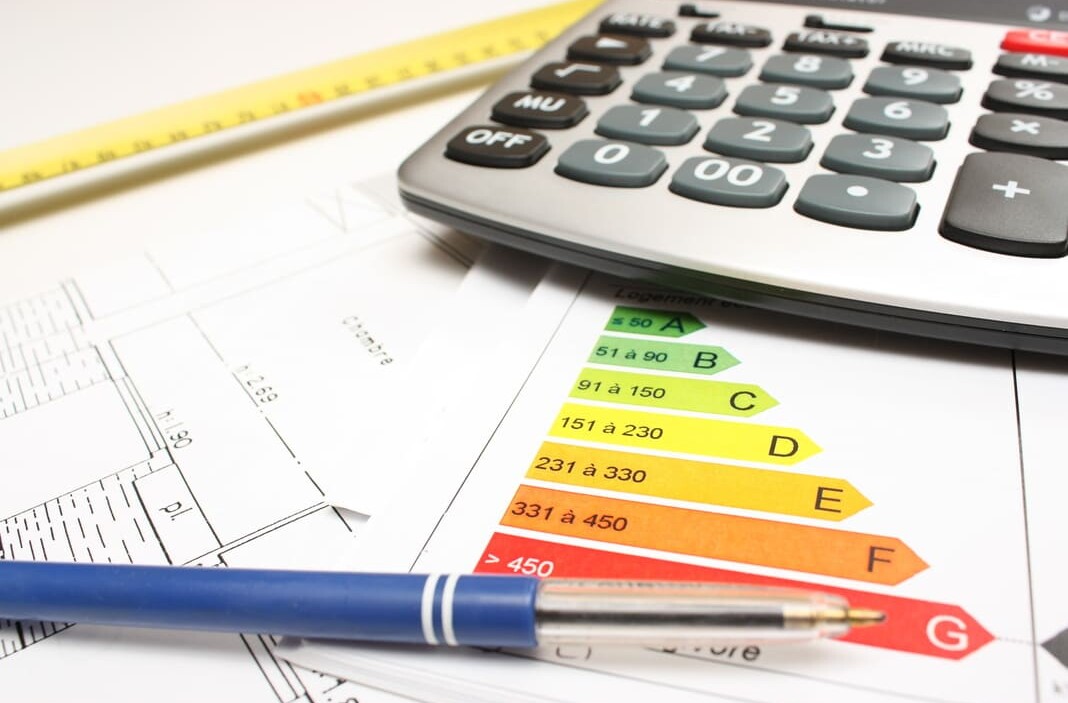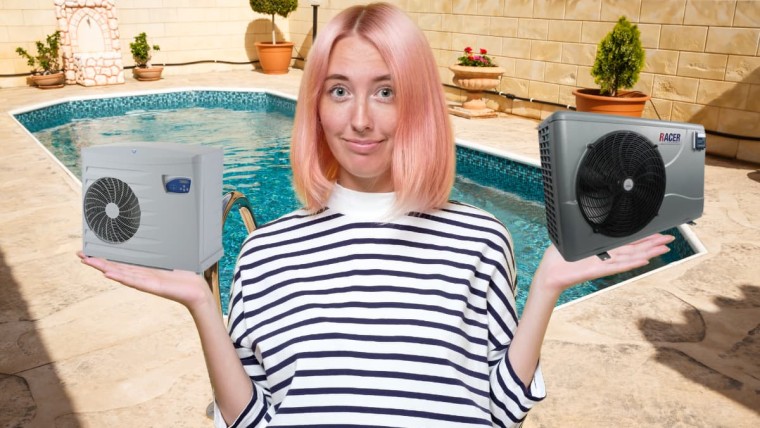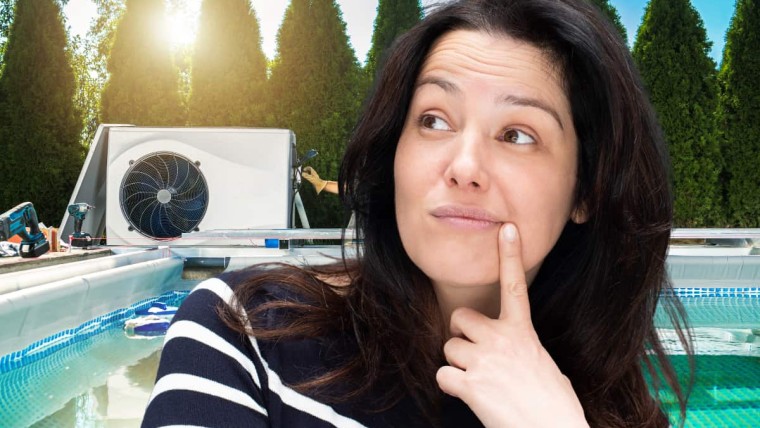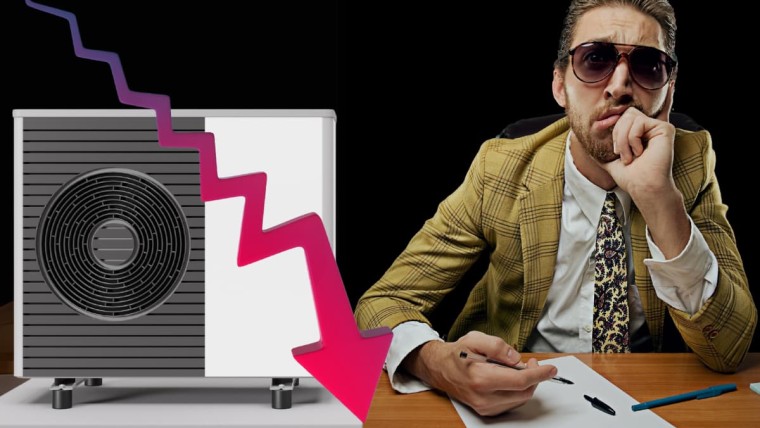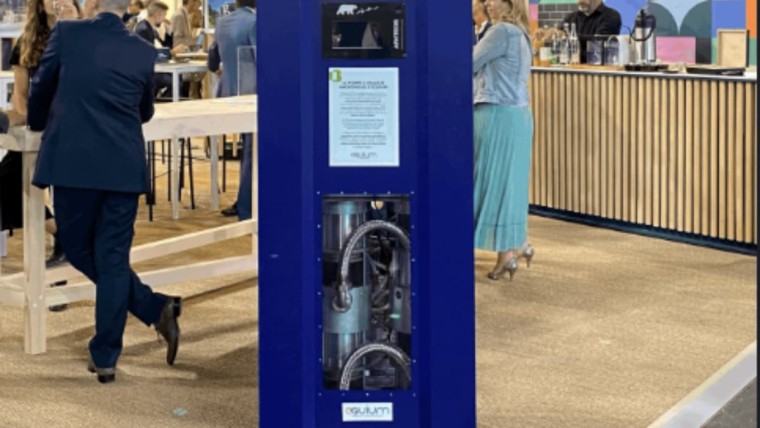Nous allons voir plusieurs questions à se poser au moment choisir sa pompe à chaleur en Suisse ?
Comment choisir sa pompe à chaleur ?
Lorsqu’il s’agit d’installer un nouveau chauffage parce que notre ancienne chaudière gaz ou mazout va bientôt rendre l’âme :
Une solution de chauffage à base d’énergies renouvelables est efficace et permet de profiter d’un potentiel conséquent d’énergie gratuite.
Beaucoup d’acteurs se bousculent sur le marché de la rénovation de l’habitat individuel ou collectif.
Si vous passez par des sites de devis gratuits en ligne, vous recevez plusieurs devis rapidement, et leur analyse vous incombe.
Cet article a pour objectif de faire la lumière sur les points les plus importants à prendre en considération avant l’achat de votre pompe à chaleur.
Nous allons répondre à plusieurs questions qui ne sont pas forcément organisées
Mais dont le contenu global vous permettra de trouver toutes les informations pour faire votre choix.
Quels sont les types de pompe à chaleur ?
Le type le plus connu de pompe à chaleur en Suisse est la PAC géothermique.
Son principe repose sur un échange de calories entre :
- Un fluide glycolé qui circule dans des sondes enfouies profondément dans le sol
- Et l’eau de votre circuit de chauffage.
On parle d’un échange entre circuit primaire et circuit secondaire, au travers d’un échangeur à plaques.
Dans ce cas on puise la chaleur dans le sol et on la restitue ensuite à l’eau du réseau de chauffage.
Ensuite la Pompe à chaleur air eau, ou pac air eau, offre le même principe :
À la différence que l’échange se fait entre l’air extérieur et l’eau du réseau de chauffage.
Plus de sondes enfouies dans le jardin.
Ce modèle consiste en une simple unité extérieure avec ventilateur qui se place souvent en façade, ou un peu plus au milieu du jardin.
Le succès grandissant de la pac air eau vient de son prix souvent plus bas que la pompe à chaleur géothermique, puisqu’une sonde très onéreuse n’est pas nécessaire.
Il existe aussi un modèle de PAC air eau intérieur :
Rien ne se trouve à l’extérieur dans ce cas.
Mais nous devons ramener l’air jusqu’au bloc pompe à chaleur, par le biais de gaines en acier galvanisé par exemple, ou autre matériau.
Il existe aussi la pompe à chaleur eau eau :
Elle puise les calories dans une nappe phréatique, une rivière, un lac ou autre, et les redonne sur le réseau de chauffage.
Elle est plus rare, mais son coefficient de performance, ou COP, est toujours beaucoup plus élevé.
Il existe encore la pac air air ou pompe à chaleur air-air :
Celle-ci prend les calories dans l’air et les redonne sur l’air de la pièce.
Son coefficient de performance est beaucoup plus faible.
Ce principe se retrouve au niveau des systèmes de climatisation les plus courants (climatiseur réversible Daikin ou autre) que l’on retrouve dans les maisons individuelles, dans les bureaux du secteur tertiaire, ou encore dans l’habitat collectif.
De nombreux autres types de pompes à chaleur existent également : ce sont des types moins répandus comme la pac gaz ou la pac stirling.
Peut-on installer une pompe à chaleur sur tous les types de réseaux de chauffage ?
Les pompes à chaleur fournissent la plupart du temps des températures d’eau basses pour votre chauffage.
Certaines peuvent monter très haut, cependant c’est au détriment de leur coefficient de performance.
Donc on préfère souvent rester :
- Vers les 50°C en sortie de pompe pour des radiateurs basse température
- Ou alors entre 28 et 35°C pour un chauffage au sol
Si vous disposez d’un réseau ou d’une distribution de chauffage par le sol :
Alors la pompe à chaleur est parfaite, car les températures nécessaires restent toujours basse, de l’ordre de 30°C.
En effet les surfaces d’échanges étant importantes (tous les serpentins qui parcourent le sol), la température demandée peut rester faible.
Si vous disposez d’un réseau de chauffage par radiateurs :
Chaque radiateur a une surface dimensionnée afin qu’avec la température d’eau fournie par la chaudière fioul ou gaz actuelle, il puisse chauffer la pièce dans laquelle il se trouve.
Si on passe une température d’eau plus basse, alors il fournit toujours une puissance thermique.
Mais celle-ci est moindre, et cela risque de ne plus chauffer la pièce en question.
À moins que le radiateur en question soit surdimensionné.
Dans la plupart des cas sa surface ne sera plus assez grande pour assurer le chauffage de la pièce.
Il faudra peut-être le changer dans ce cas.
Si vous demandez une subvention, il est certain qu’il faudra le changer car l’Etat demandera des infos.
Il faut installer des radiateurs basse température dimensionnés selon chaque pièce.
Le cas échéant il est judicieux de réaliser un bilan thermique du logement.
Si vous avez des radiateurs en acier dans lesquels passait 70 ou 80°C, alors il est peu probable qu’en passant 50°C leur puissance thermique suffise.
Il faudra donc les changer.
Si votre installateur de pompe à chaleur vous dit le contraire :
C’est qu’il compte faire fonctionner la pompe à chaleur sur son potentiel maximum, au détriment de son coefficient de performance, ou COP.
Ou pire, il compte mettre la résistance électrique et vous aurez un chauffage électrique en retour : COP = 1, inutile.
Si vous avez des radiateurs type fonte, alors il est plus probable qu’une température de 50°C suffise pour amener la puissance thermique dans chaque pièce.
Ce n’est pas toujours le cas et seul un bilan thermique vous le dira (à différencier d’une évaluation énergétique type CECB)
Combien d’électricité vais-je payer ensuite ?
La consommation énergétique de la pompe à chaleur provient en partie de l’air, la terre, ou l’eau, et en partie du réseau électrique. Le coefficient de performance ou COP de la machine que vous choisissez indique combien de kW sont puisés dans la source gratuite, et combien dans le réseau.
Pour un COP de 5, cela signifie que pour un 1kW puisé chez le fournisseur d’électricité, la pompe à chaleur produit 4kW de puissance thermique pour le logement. En comparaison un chauffage électrique direct puis 1kW sur le réseau et restitue 1kW au réseau (au rendement près) soit un COP de 1 théoriquement.
Dans le cas où vous n’installez qu’une pompe à chaleur et que vous ne changez rien d’autre dans le logement (isolation, fenêtres ou autre) alors vous pouvez estimer la consommation en convertissant votre consommation d’énergie fossile ou électrique, en kWh électrique, puis utiliser la donnée de COP du fournisseur et enfin le prix du kWh actuel.
Par exemple : 1000L de mazout représentent 10 fois plus de kWh électrique environ. Soit 10 000 KWh. Si le COP est 3 alors vous consommerez 10 000 / 3 soit 3333kWh environ donc au prix de 0,20 cts par kWh, votre facture sera de 3333 / 5 = 660 francs environ. Utilisez notre magnifique convertisseur réalisé en Vue.js pour faire vos calculs.
La pompe à chaleur peut-elle produire de l’eau chaude sanitaire ?
Il existe plusieurs solutions et cela dépend du système de pompe à chaleur.
Il y a des avantages et des inconvénients à produire directement l’eau chaude sanitaire avec la pompe à chaleur qui fait déjà le chauffage.
Les pompes à chaleur pour chauffage peuvent aussi chauffer l’ECS :
Pour cela il faut installer une vanne 3 voies dans le système qui va dire au circuit de basculer sur le chauffage ou sur l’eau chaude sanitaire.
La plupart du temps cette eau chaude est stockée dans un ballon d’eau chaude sanitaire
Elle est chauffée par l’intermédiaire d’un échangeur à plaques dans lequel circule l’eau chauffée par la pompe.
Car on ne se douche pas directement avec l’eau créee par la PAC.
L’avantage de produire l’eau chaude sanitaire avec la pompe à chaleur directement, c’est qu’on a un seul système pour les deux usages, chauffage et eau chaude.
La solution est plutôt moins coûteuse.
L’inconvénient c’est :
- Qu’on se retrouve avec une pompe à chaleur qui tourne en été pour faire l’eau chaude
- Et qui peut faire légèrement de bruit sur une terrasse ou autre, à cause du ventilo ou du compresseur.
Cela dépend des modèles.
Du coup on a un produit qui s’appelle un ballon thermodynamique, parfois appelé boiler pac.
Celui-ci consiste en une mini pompe à chaleur greffée sur un ballon d’ECS.
Cette mini pac tourne indépendamment de la PAC principale.
Et tout se trouve à l’intérieur, du coup plus de bruit.
L’inconvénient de ce deuxième système c’est
- que la pièce où se trouve le ballon d’eau chaude est refroidie car il faut bien y puiser les calories pour chauffer l’eau.
- Et que ces ballons sont moins durables que les grosses pompes à chaleur.
Il faut faire son choix entre confort auditif extérieur, et durabilité du matériel.
Par grand froid est-ce que ça marche une pac aérothermique ?
Pour la pac air eau, lorsqu’il fait très froid, avec des températures en dessous de -10°C, cela complique l’affaire.
Car il y a moins d’énergie dans l’air.
Du coup la pompe va consommer plus d’énergie pour essayer de produire la température demandée pour chauffer la maison.
Le coefficient de performance ou COP baisse drastiquement.
Un installateur, ou parfois directement un fournisseur, va vous vendre un modèle à 4 de COP :
Mais à -10°C dehors, avec une température de sortie d’eau de 50°C de la pac, le COP va se trouver vers les 2 ou 2,3.
Il faut relativiser cette donnée car même si dans votre région il fait très froid, il ne fait que très rarement -10°C ou moins pendant plusieurs jours sans discontinuer.
Dans la plupart des communes la température moyenne annuelle tourne vers les 5°C donc tout va bien.
Certains modèles de pompe à chaleur avancent des performances de COP de 3 par -25°C !
Il vaut la peine d’éclaircir cette donnée avec le vendeur ou son équipe technique.
Doit-on demander un contrat d’entretien pour la pompe à chaleur ?
La pompe à chaleur c’est comme une voiture.
Il y a un service à faire toutes les X heures de fonctionnement du compresseur.
Sinon, petit à petit, tout s’écroule.
Les coefficients sont mauvais, la facture énergétique s’envole, jusqu’à la panne.
En planifiant un passage de technicien au bout des deux premières années, puis ensuite tous les deux ans, vous êtes certains que la machine est sur les bons rails.
Si toutefois votre prestataire est qualifié.
De grandes entreprises de la place sont capables parfois d’envoyer des équipes incompétentes chez vous
Et vous vous retrouvez à payer des factures incroyables qui ruinent vos efforts pour économiser l’énergie au quotidien.
C’est quoi en fait le principe physique derrière la pompe à chaleur ?
La pompe à chaleur c’est simple, c’est comme un frigo qui fonctionne dans l’autre sens.
Un frigo prend la chaleur des aliments, et il la redonne à l’air de la maison.
Oui car le condenseur qui se trouve au dos redistribue la chaleur prise aux aliments, vers l’air de la maison, même si on ne sent pas trop que ça chauffe derrière le frigo.
La pompe à chaleur ne prend pas la chaleur des aliments, mais dans l’air extérieur
Eh oui car même quand il fait très froid et que la température extérieur est très basse, il y a de la chaleur ou plutôt de l’énergie dans l’air extérieur
Et ensuite elle la redonne à l’eau du réseau de chauffage (ou l’air ambiant de la maison si c’est une air air)
Mais comment fait la pac pour prendre la chaleur dans l’air de dehors ? => Elle contient un fluide frigorigène !
Celui-ci à la propriété de prendre la chaleur du milieu dans lequel il est, lorsqu’il s’évapore.
Donc il faut qu’on le fasse évaporer dehors pour qu’il prenne la chaleur de l’air.
Pour le faire évaporer on va le mettre à la pression qu’il veut pour pouvoir s’évaporer, grâce à un détendeur.
Il veut une pression différente pour chaque température qu’il fera dehors donc on doit réguler tout ça.
Quand on a fait ça, la chaleur de l’air de dehors se retrouve dans notre fluide frigorifique ou fluide régrigérant.
Maintenant il faut qu’on la reprenne pour la redonner à l’eau du réseau de chauffage. Comment on fait ?
Cette fois on doit faire condenser le fluide car la condensation est une réaction qui redonne la chaleur à son milieu.
Donc on doit le faire condenser au niveau de l’eau du réseau.
Pour ça on utilise un condenseur dans lequel il passe.
Et on va de la même façon jouer sur la pression pour qu’il condense à la bonne température.
Pour ça on utilise un compresseur.
Il faut le faire condenser à la température qu’on veut pour notre eau de chauffage.
Autour de 50°C pour un radiateur eau classique et 30°C pour un chauffage sol.
Comment est-ce qu’on peut arriver à l’autoconsommation avec la pompe à chaleur ?
L’autoconsommation c’est quand on consomme ce que l’on produit ou qu’on produit ce qu’on consomme.
C’est vraiment très délicat à obtenir.
Pour devenir autosuffisant et consommer sa propre électricité, Il faut utiliser des panneaux solaires photovoltaïques par exemple.
On utilisera une partie de leur courant électrique pour alimenter la pompe à chaleur.
Pour une construction neuve qui vise la basse consommation c’est intéressant à envisager pour vos travaux.
Pour une rénovation c’est aussi intéressant même si moins aisé.
Il faut que le régulateur de la pompe à chaleur dispose d’une fonction appelée PV Ready
Pour qu’il détecte quand on a de la production et qu’il se serve alors de ce courant pour fonctionner.
Une problématique essentielle est que le soleil est majoritairement présent quand on a le moins besoin de chauffage.
En été par exemple ou en journée alors que la plupart des gens sont au boulot !
Du coup il est intéressant d’envisager de stocker le courant solaire produit la journée avec des batteries.
Cependant c’est onéreux encore en 2020, en comparaison de ce qu’on peut en retirer comme économie.
Est-ce qu’il faut isoler par l’extérieur avant de mettre une pac ?
Pas forcément mais c’est quand même conseillé.
Chauffer une passoire, avec un système dernier cri, c’est un peu dommage.
Mais tout le monde n’a pas les moyens de tout faire.
Du coup, commencer par isoler est intelligent puisque cela permettra de diminuer la puissance nécessaire à la pompe à chaleur pour chauffer le logement.
Pour isoler son logement, une isolation des murs ainsi qu’une isolation toiture feront l’affaire
Avec une petite laine de verre ou de roche ou un matériau dernier cri si vous avez les moyens.
Prenez garde à ce que le poseur s’occupe bien de réduire les ponts thermiques.
Par exemple isoler le toit par l’intérieur entre chevrons va créer des ponts thermiques pas toujours très sains pour la structure.
Cela peut créer un peu de condensation et faire pourrir les matériaux.
Quel prix pour mon installation de pompe à chaleur ?
Aujourd’hui une installation complète avec eau chaude sanitaire, en pac air eau, tourne autour de 30’000 ou 35’000 CHF tout compris.
Certaines entreprises étrangères cassent les prix et abaissent le niveau global.
Beaucoup de facteurs humains et industriels influent sur le prix d’une pompe à chaleur.
Pour une installation en pac géothermique avec eau sanitaire également, compter environ 25’000 CHF de plus, à cause du forage et de la mise en place des sondes géothermiques par un foreur accrédité.
Puis-je dimensionner ma pompe à chaleur tout seul ?
Oui, votre installateur se repose le plus souvent sur son fournisseur qui fait le calcul à sa place.
Mais le calcul est simple et si vous avez encore des notions de vos jeunes années, vous pourrez le faire vous-même..
Vous trouverez tous les calculs à faire sur les feuilles sur ce lien.
Les formules peuvent paraître impressionnantes mais en lisant un peu c’est plus simple qu’il n’y parait.
Alors si vous savez compter ça devrait aller.
Qui pour installer ma pompe à chaleur ?
Il est raisonnable que l’entreprise en question dispose d’au moins un frigoriste, car l’installation d une pompe à chaleur nécessite vraiment cette compétence.
Un sanitaire ne connait pas les circuits frigorifiques et se reposera un peu plus sur son fournisseur pour vous aider, rallongeant peut-être les délais de dépannage.
Puis-je faire tourner ma pompe à chaleur la nuit ?
Si elle est couplée à une installation photovoltaïque, il y plutôt intérêt à la faire tourner de jour pour utiliser le courant solaire.
En cas de pac air eau extérieure, la faire tourner de nuit fera du bruit dehors la nuit, ce qui n’est pas idéal pour les voisins.
Le bruit d’une pompe à chaleur est à prendre au sérieux car très contrôlé par les communes.
Si vous n’avez pas de panneaux solaires, vous pourriez vouloir utiliser les tarifs heures pleines ou heures creuses et donc faire tourner la nuit pour payer moins.
Mais les fournisseurs d’électricité offrent déjà des tarifs de courant spéciaux pompe à chaleur plus bas qui rend cette hypothèse caduque.
Renseignez-vous auprès de votre installateur.
Comment chauffer ma piscine avec la pompe à chaleur ?
Aujourd’hui la plupart des fabricants offrent des systèmes permettant de chauffer la piscine avec la même machine qui fait le chauffage et l’eau chaude sanitaire.
Ces installations reviennent parfois un peu cher à l’installation, mais font peu de bruit pour assurer leur fonction.
Il existe aussi, pour donner dans le low cost, une sorte de pompe à chaleur pour piscine, légère, dédiée aux piscines uniquement.
Ces machines sont en général de gros consommateur puisqu’elles doivent chauffer un gros volume d’eau en puisant des calories dans l’air.
De plus elles font du bruit, et dans le canton de Vaud, en Valais ou sur Genève, c’est très controversé, très réglementé et terriblement redouté.
J’ai vu qu’il y avait un ballon tampon dans mon devis, mais c’est quoi un ballon tampon ?
Il sert, comme son nom l’indique, à faire un tampon entre la pompe à chaleur et l’eau chaude du réseau de chauffage qui passe dans les radiateurs notamment.
Les professionnels qualifiés calculent toujours un ballon tampon selon votre cas particulier.
Pourquoi installer un ballon tampon ? Si vous avez des radiateurs, il faut savoir que le volume d’eau qui les traverse est très faible.
Quand il va y avoir besoin de chaleur pour votre logement, il va falloir que la pompe à chaleur se mette en route pour chauffer ce volume d’eau qui va traverser vos radiateurs.
Cependant il est tellement faible que la pompe à chaleur va le chauffer très rapidement, en quelques minutes peut-être
Puis la demande aura disparue et la pac va stopper. Le compresseur stoppe.
Mais ensuite le besoin revient assez vite car la chaleur est restituée dans le logement.
Donc il faut rallumer la pac et le compresseur et ainsi de suite…
Le compresseur déteste ces allumages intempestifs et risque d’en souffrir.
C’est pourquoi pour toute demande de chauffage on va réserver tout un volume d’eau à chauffer
Pour que la pac tourne un minimum de temps, le temps de chauffer ce volume.
Ensuite on puisera l’eau chaude de chauffage dans ce ballon, avant de demander au compresseur de se rallumer.
En général il a une capacité de 200 ou 300 litres.
Conclusion
Pour conclure, dans l’idée de changer son mode de chauffage, installer une pompe à chaleur est une solution viable.
Il faut prendre garde à bien discuter le principe de fonctionnement avec votre installateur
Et à bien vérifier le dimensionnement afin que la consommation électrique reste au plus bas.
N’oubliez pas de vérifier la puissance calorifique que vos radiateurs peuvent restituer en fonction de leur surface et de la température d’entrée d’eau qu’ils reçoivent.
En fonction du modèle choisi la machine sera plus ou moins bruyante : vérifier que la pression sonore à quelques 3 ou 4 mètres ne dépasse pas 25 ou 30dBA.
Les modèles de pompe à chaleur haute température sont une mauvaises solutions
Car cela signifie que vous installez une pac sur des radiateurs qui ont besoin d’une haute température.
Donc vous placez la charrue avant les bœufs.
Prévoyez d’abord une isolation par l’extérieur de votre façade, ou une isolation des combles
Et ensuite changez vos fenêtres par exemple, ensuite vous mettrez une pompe à chaleur avec radiateurs basses températures ou chauffage au sol.
Pour votre Production d’eau chaude sanitaire choisissez entre :
- Le chauffe-eau thermodynamique qui refroidit la pièce et qui fait du bruit
- Et directement une production d’eau chaude intégrée à la pompe à chaleur de chauffage.

Julien G.
Julien, diplômé en ingénierie mécanique et spécialiste en génie climatique depuis 2009, s'est reconverti en rédacteur spécialisé en énergies renouvelables, avec une expertise en pompes à chaleur et panneaux solaires photovoltaïques pour l'habitat individuel.
Voir tous les articles de cet auteur
